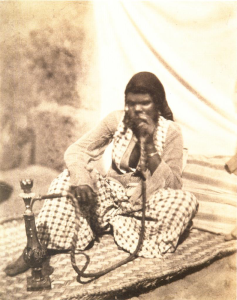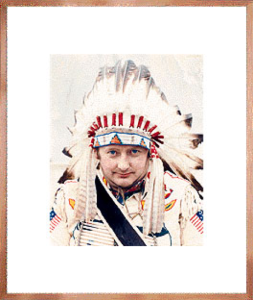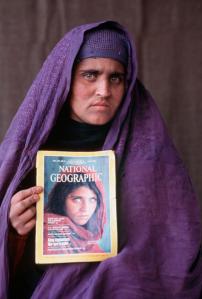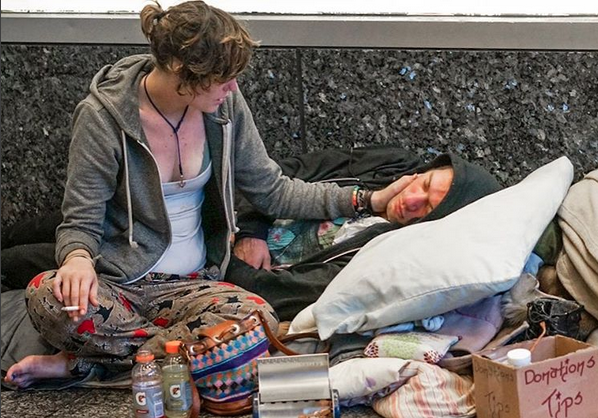Guide Entry D1 (D = Discussion)
About a week has passed since the 2017 Academy Awards. A year after #OscarsSoWhte, this year’s Best Picture was awarded to Moonlight, a movie focused on African American.
Even then, the moment was somewhat overshadowed by the mixup that occurred as La La Land was mistakenly announced as the Oscar winner first.
Fortunately, both the creators of Moonlight and La La Land took this lightly. And the consensus is that Moonlight is truly a phenomenal movie that deserved the award, and so was La La Land. This year, one could say the Oscar winner for Best Picture wasn’t decided because of race. This is refreshing, especially during a time when tension race relations are still fuming.
However- to this day, the movie industry remains filled with cultural appropriation. Last year, I remember watching Tina Fey’s movie Whiskey Tango Foxtrot, which cast two whites to play significant Afghan roles. Pretty messed up… and I love Tina Fey.
This year, Matt Damon starred in The Great Wall as a European mercenary that saves China. Why is the protagonist role given to a white man? China is powerful country… it’s done just fine on it’s own. Many people of Chinese heritage, including myself, found this very ridiculous. Asian American comedian Jenny Yang started a hashtag trend to make fun of this: #ThankYouMattDamon. (Source: NJ.com)
It’s easy to be disappointed when seeing this. It makes no sense to have a character of a certain race be played by another. In other words, why should a white actor play the role of a Chinese warrior? White dominance has been something that affects the movie industry greatly; Aziz Ansari also addresses this issue within the TV industry in his Netflix show Master of None. I believe it’s present in photography as well- a topic I’m more versed in.
Then I thought: I have look at myself and my love for photography. Can I be found guilty of exercising unethical dominance over others in my own life?
I have. During a windy and torrential winter day last December, I was in New York City for a career networking event on 44th and 7th. I took a subway one stop uptown from Penn Station to Times Square. Exiting the Times Square subway station, I saw a couple seated on the floor. They were protected from pouring rain by the subway station entrance roof, but exposed to the harsh winter wind coming from outside.
I decided to photograph this scene. In fact, I even posted it on Instagram later on.
#homeless. What the heck was that for? Although the photo captured a beautiful moment as the female gently takes care of the man. I was eager to take a photo of this scene; at the same time, I was ashamed. I tried to be as nonchalant as possible, hoping no one would see me taking the photo.
Why? I took their photo and I captured a emotion-filled image, but I didn’t know their names. I didn’t donate any money or food to them. I’m privileged enough to enjoy photography as a hobby, while the subjects I had photographed don’t even have a place to call home. I was “borrowing” their homelessness for the sake of my photography.
Unethical photography has been an a topic of debate dating back to the 19th century, the century when photography was invented. Colonization and Imperialism in the 1800s played important roles in the origins of photography. Photographers would travel to other countries and photograph people from other civilizations.
Take a look here at a photograph of a Turkish woman by a French photographer Earnest Benecke:

Photographs back then required exposure times that could take up to 30 seconds- this was not a candid. In my Art History class, we discussed the interaction that may have taken place between the German photographer and the Turkish woman. Did he pay her? Regardless, Benecke “borrowed” the Turkish woman’s “subordinate” culture for his own gain.
Here’s another photo taken in the 1990s:

The man in the photograph is a white German, dressed up as a Native American Apache chief for his own leisure. This man “borrowed” the Native American headdress for his own pleasure.
This photograph would be an example of cultural appropriation, which when definite is “something that typically involves members of a dominant group exploiting the culture of less privileged groups — often with little understanding of the latter’s history, experience and traditions. … In the United States, cultural appropriation almost always involves members of the dominant culture (or those who identify with it) “borrowing” from the cultures of minority groups.”
(Source: http://racerelations.about.com)
In 2014, Pharrell Williams, music star and judge for NBC’s The Voice, wore a Native American feather headdress on the cover of Elle magazine.

Williams faced immediate criticism. Although he claims to have some Native American heritage, he apologized with a statement on Buzzfeed: “I am genuinely sorry. I respect and honour every kind of race, background and culture.” (Source: Independent UK)
The Indian Country Media Network made a statement: “Many of the people who are appalled by this image are deeply connected to their Native culture and live it every day. If they say the picture is hurtful, it’s hurtful, and a Cherokee grandmother doesn’t change that.” (Source: Independent UK)
Similarly, the professional football team Washington Redskins have faced countless backlash for using the mascot name “Redskins”– a term for Native Americans that is considered offensive. I’ll let one of my favorite comedians, John Oliver, speak for me here:
(Source: HBO’s Last Week Tonight with John Oliver)
One last example:
Afghan Girl by Steve McCurry (Source: National Geographic)
This was an award winning still by National Geographic’s photographer Steve McCurry. The woman in the photograph was a refugee living in Pakistan during a time of Soviet invasion in her home Afghanistan. Her parents were killed by a Soviet bomb. McCurry captured this photograph during a visit to a refugee camp and went on to achieve success and fame, while the woman in the photograph continued to live life of survival as a refugee. (Source: National Geographic)
The photograph was titled Afghan Girl. She didn’t even have a name. McCurry would eventually return to meet the woman (named Sharbat Gula) and take another photo to headline a “then and now” article for National Geographic. But even then, you could say McCurry “borrowed” this Sharbat’s suffering for his photographic success.

It’s easy for me to complain about the atrocity of these images. It’s not fair that Earnest Benecke in the 1800s to photograph this woman for his own fame. It’s messed up for someone to dress up as a Native American chief just for funsies-Pharrell Williams even apologized for it. It’s unethical for The Washington Redskins make millions while it’s name is derogatory and offensive. Steve McCurry added to his photographic legacy in America while the subject in his photo went on to live a difficult life as a Afghan refugee.
There are countless examples of this in our society today, but let’s return to my experience photographing a homeless couple in New York City. I would like to say that I wanted to capture the woman’s care for her ill partner as well as the homelessness that they are living through. But there’s still something inside me that bothers me- I didn’t help them, and I posted the photograph online on social media. My intent was for others to see my photograph- a photograph of people suffering nonetheless.
My final conclusion is somewhat open-ended. I believe that art can be a powerful tool to demonstrate people who are suffering and bring about empathy among viewers. When done successfully, an artist can gain success in the process. But in order to preserve their humility, artists must do their best to empathize for and take part in assisting the suffering people they are portraying in their own lives. I am financially privileged, yet I am “borrowing” this couple’s homelessness for the sake of my photography. I used the hashtag #prayforthehomeless, but am I actually praying for them and doing my best to care for the homeless in my own life?
Challenge D1: Take a look at the photographs around you on social media and see if you can find examples of cultural appropriation.
Challenge D2: Next time you post a picture on Instagram, Facebook, or even your Snapchat story, ask yourself what your reasoning is behind posting it. How does this picture help elevate a certain aspect about yourself that you want others to see? (Speaking honestly for myself, my Instagram is full of photographs where I want to elevate my reputation as an artist and as a photographer).
What do you think? Do you think photography can be unethical? Have you seen any examples of cultural appropriation? Please comment below!
Terms:
cultural appropriation – “cultural appropriation typically involves members of a dominant group exploiting the culture of less privileged groups — often with little understanding of the latter’s history, experience and traditions.”
-“In the United States, cultural appropriation almost always involves members of the dominant culture (or those who identify with it) “borrowing” from the cultures of minority groups.”
(Source: http://racerelations.about.com)


